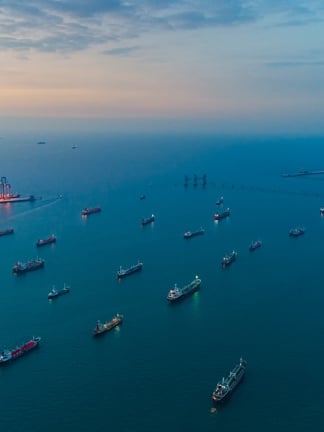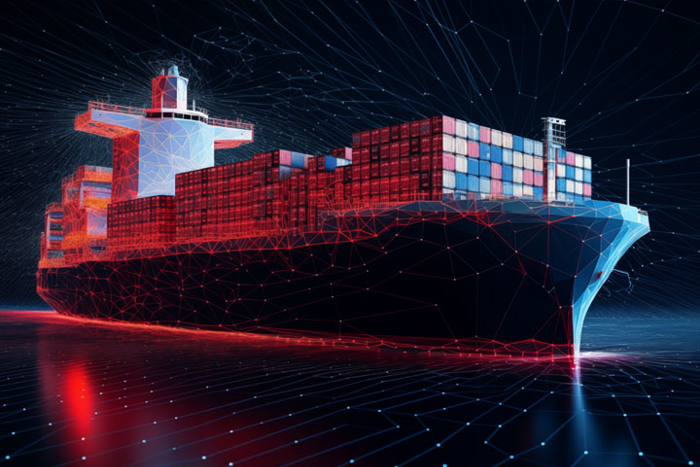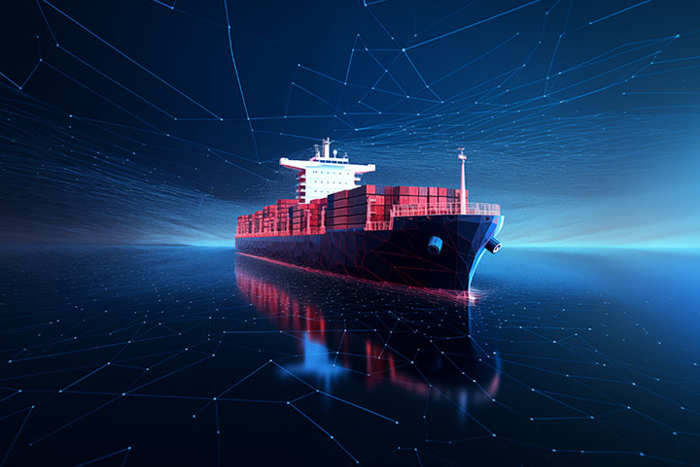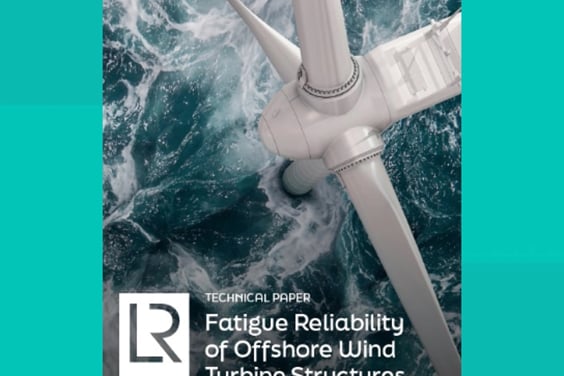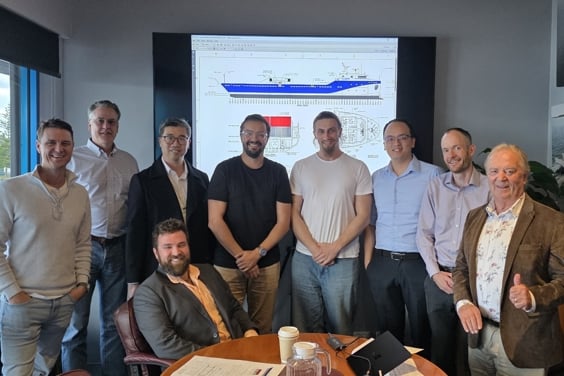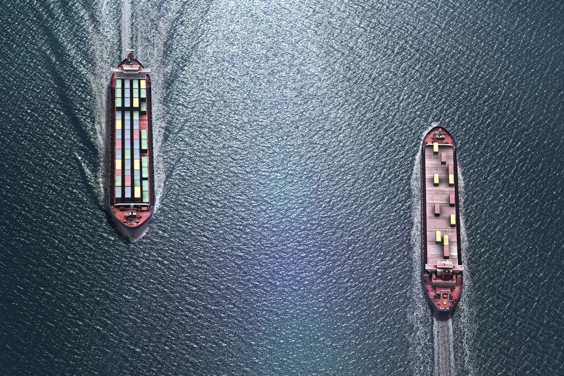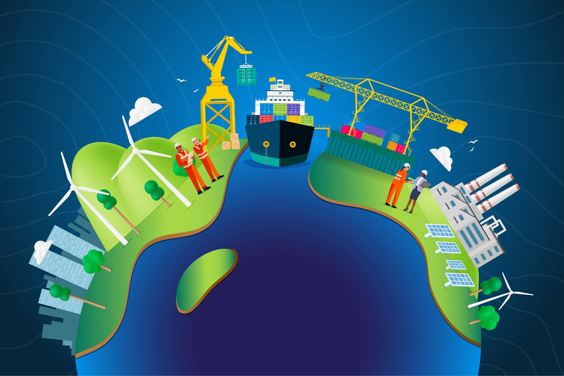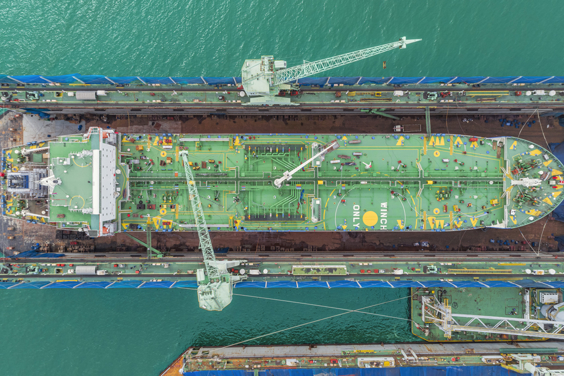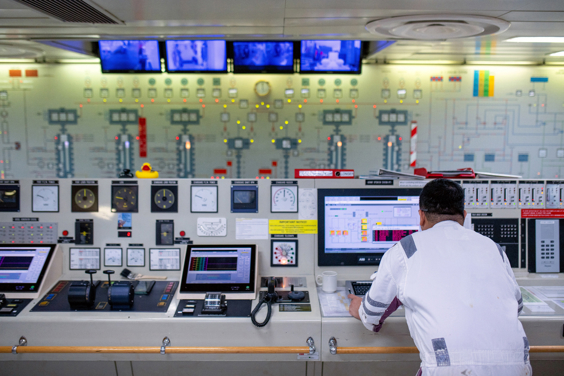
To help achieve its net zero ambitions, the EU actively promotes renewable and zero carbon fuels and uses onshore power at berth for ships over 5000 GT. This is part of its plan to reduce annual greenhouse gas (GHG) intensity from shipping by 80% by 2050, against a 2020 baseline.
Known as FuelEU, this legislation requires ships to monitor and report the GHG intensity of energy used onboard and introduces penalties for non-compliance. Ships must meet a series of yearly deadlines to track GHG emissions intensity using methodologies set out in FuelEU Monitoring Plans.
FuelEU maritime regulation
- What is the FuelEU Maritime Regulation?
- Advice for shipowners and ship managers
- Our solutions
- Class News
- Frequently asked questions
FuelEU Maritime requires ship owners, managers or charterers to accelerate the uptake of renewable and low-carbon fuels in maritime transport, and cement the use of onshore power during port stays of more than two hours.
Introduced by the European Union (EU), this regulation (Regulation (EU) 2023/1805 ) aims to drastically reduce onboard greenhouse gas (GHG) emissions by 2050 and forms a substantive part of the EU’s Fit For 55 package to reduce GHG emissions from shipping. It also gives ship operators and fuel producers legal certainty by increasing the demand for renewable and low-carbon fuels.
How does FuelEU work?
Applying to ships over 5000 GT, FuelEU sets targets to reduce the GHG (CO2, CH4 and N2O) intensity of energy used onboard against a 2020 baseline. The chart below shows the reductions at 5-year intervals.
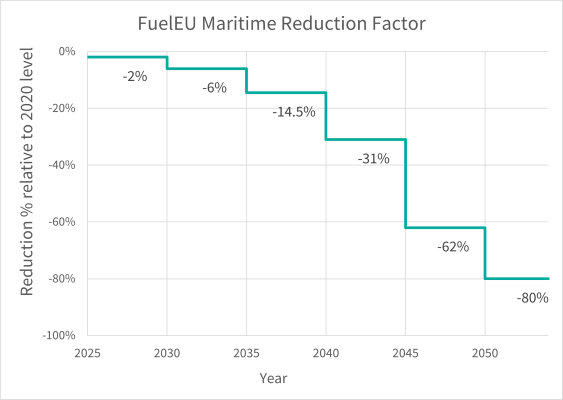
Above: Reduction in GHG intensity of energy used on board from 2020 levels (%).
'GHG intensity' is a measure of the total CO2-equivalent emissions onboard a ship between January and December in any given year. Measurements are based on reported fuel consumption, from EU MRV, and the emission factors of the fuels used, including emissions from production to transportation, bunkering and end-use (known as ‘well-to-wake'), as described in Annex I of FuelEU. Track your ship’s emissions and create Monitoring Plans using LR Emissions Verifier.
FuelEU promotes low or zero carbon fuels but is technology agnostic. Any combination of technologies and fuels can be used that best suits the ship owner, manager or charterer to reduce GHG intensity of energy used onboard.
In the short term, wind assistance, optimised journeys and efficient propellers could all improve journey efficiency. In the medium to long term low or zero carbon fuels with much lower GHG intensity will have the greatest impact.
Financial penalties will be due if owners, managers or charterers cannot meet the reductions required for energy used above the 2020 baseline.
Read LR's guide to managing compliance and optimising operations under the EU's new regime here.
Onshore Power
To drastically reduce onboard emissions during port stays, passenger and container ships must connect to onshore power supplies at major EU ports from 2030, and all EU ports with onshore power supplies from 2035.
Ships using zero-emission technology at berth will be exempt, as will very short stays of less than two hours. Port contraventions will be subject to financial penalties.
RFNBOs
From 1 January 2025, the European Commission will monitor and incentivise the uptake of Renewable Fuels of non-Biological Origin (RFNBOs), also known as e-fuels, including e-diesel, e-methanol, e-LNG, e-hydrogen, e-ammonia, e-LPG and e-dimethyl ether (DME).
If the share of RFNBOs is less than 1% of all fuel usage within scope of the regulation between 1 January and 31 December 2031, then a sub target will mandate 2% RFNBOs from 1 January 2034.
Flexibility compliance mechanisms
To maximise FuelEU compliance and minimise penalties, ship owners, managers or charterers may bank or borrow savings in GHG intensity, or pool savings within or between fleets. These approaches are known as ‘flexibility compliance mechanisms’.
In any one year, ship owners, managers or charterers can bank unused GHG emissions from an over-compliant ship, to use on that same ship in the next reporting period. Or they may pool any unused emissions from one ship with under-compliant ships in a common pool. Pooling can be applied either within a fleet or between fleets where a contractual agreement is in place. While individual ships can use different verifiers, each pool must be logged with a single verifier.
For ships which do not comply in any one year, it's possible to pool the unused emissions from another ship or ships in the fleet, as described above. Or ship owners, managers or charterers may borrow unused emissions for the same ship from the next reporting period. However, those choosing this option must pay back the surplus, plus an 10% surcharge, from that ship’s next reporting period.
What do ship owners, managers or charterers need to do?
The ship’s ISM company/Document of compliance (DoC) holder is responsible for FuelEU compliance. Each year, owners, managers or charterers operating cargo and passenger ships of 5000GT and above calling at an EEA port will need to:
- By 31st August prepare and submit monitoring plans to verifiers for approval.
- From 1 January 2025 collect and report data according to the monitoring plan, for:
- 100% of energy used for voyages between two EEA ports of call and at berth, on a well-to-wake basis.
- 50% of energy used for voyages between EEA and non-EU ports.
- By 30 June 2026 obtain a valid FuelEU DoC for the ship.
For more detail see the FuelEU timetable for compliance.
What do ship owners, managers or charterers need to do?
The ship’s ISM company/Document of compliance (DoC) holder is responsible for FuelEU compliance. Each year, owners, managers or charterers operating cargo and passenger ships of 5000GT and above calling at an EEA port will need to:
- By 31st August prepare and submit monitoring plans to verifiers for approval.
- From 1 January 2025 collect and report data according to the monitoring plan, for:
- 100% of energy used for voyages between two EEA ports of call and at berth, on a well-to-wake basis.
- 50% of energy used for voyages between EEA and non-EU ports.
- By 30 June 2026 obtain a valid FuelEU DoC for the ship.
For more detail see the FuelEU timetable for compliance.
Use LR’s expertise to retrofit your ship for lower emissions and adapt to low carbon fuels for a more sustainable future and meet FuelEU targets, all under one serviceable solution.
Be Future Confident and meet FuelEU obligations with LR’s Energy Management Portfolio to monitor and verify emissions.
Solutions
03/2025: FuelEU regulatory update: Exempted ports, routes and islands
FuelEU Maritime permits certain exemptions, which are valid until no later than 31 December 2029. Article 2 (points 3 to 6) of the regulation outlines these exemptions regarding specific routes and ports, as well as stays within ports of call, in respect of the energy used.
31/2024: FuelEU Maritime implementation delayed for Norway and Iceland
The FuelEU Maritime regulation comes into force on 1 January 2025, but its incorporation into the European Economic Area (EEA) Agreement has been delayed and is not expected to take place before that date.
27/2024: FuelEU Maritime Monitoring Requirements for Ships Starting 1 January 2025
From 1 January 2025, the monitoring requirements of FuelEU Maritime (Regulation (EU) 2023/1805) apply for ships of 5,000GT and above carrying cargo or passengers into, between and out of EEA ports (the EU plus Norway and Iceland).
18/2024 FuelEU Maritime Monitoring Requirements for Ships Starting 1 January 2025
From 1 January 2025, the monitoring requirements of FuelEU Maritime (Regulation (EU) 2023/1805) apply for ships of 5,000GT and above carrying cargo or passengers into, between and out of EEA ports (the EU plus Norway and Iceland).
This Class News covers the FuelEU Maritime regulation in general, the timetable for compliance and how FuelEU applies to particular ships on particular voyages.
17/2024 - FuelEU regulatory update – Monitoring Plan requirements
Applicability: shipowners, ship operators, ship managers and ship builders.
FuelEU Maritime (Regulation (EU) 2023/1805), designed to support the decarbonisation of the shipping industry, mainly applies from 1 January 2025. Ahead of this, by 31 August 2024, shipowners and operators need to prepare and submit ship-specific Monitoring Plans to accredited verifiers for approval.
06/2023 - EU ‘Fit for 55’ - FuelEU Regulation
Applicability: shipowners, ship operators, ship managers, ship masters, designers, shipbuilders and manufacturers.
The European Union (EU) wish to incentivise the use of renewable and low-carbon fuels on ships to reduce greenhouse gas (GHG) emissions (CO2, CH4 and N2O). This draft Regulation forms a substantive part of the EU’s ‘Fit for 55’ package. The final draft text of the Regulation is not yet available, but this Class News gives foresight of what the requirements are expected to be.
About FuelEU
The International Safety Management (ISM) company is held accountable by the EU. The ISM company will be the shipowner if it has maintained responsibility for ISM compliance, otherwise it will be a distinct body.
Under FuelEU, the ISM company will be responsible for keeping FuelEU Monitoring Plans up to date, for collecting relevant data and submitting that data to the verifier, and for paying any penalties due, by June each year.
On August 31 2024 the Fuel EU process begins. Ship owners, operators or charterers of ships of at least 5000 GT carrying cargo or passengers and operating within or to and from the EEA will need to submit their FuelEU Monitoring Plans for assessment with a verifier.
From 1 January 2025, the company responsible for compliance, will need to diligently measure onboard energy consumption in line with the monitoring plan. The GHG intensity of energy used onboard will need to be reduced by 80% to 2050 against a 2020 baseline. You do not have to make that full reduction at once, with staged reductions every five years. The initial reduction is 2% to 2030.
Detailed plans to reduce that GHG energy intensity will be an essential component of this process. There are penalties for ships failing to reduce the annual GHG intensity reduction target.
This is an acronym for Renewable Fuels of Non-Biological Origin (RFNBOs), which are synthetic fuels, often produced using electrolysis from green power, and are actively promoted under FuelEU.
These fuels could include e-diesel, e-methanol, e-LNG, e-hydrogen, e-ammonia, e-LPG and e-dimethyl ether (eDME).
There are specific targets to increase the uptake of these fuels. If, by the end of 2031, less than 1% of maritime fuels are RFNBOs then an annual target of 2% RFNBO use onboard will be applied from 1 January 2034.
In the same way that owners, operators or charterers can pool overall compliance, they will be able to enter a separate pool to meet FuelEU RFNBO demands.
The use of Onshore Power Supply (OPS) - or other zero-emission technologies such as batteries while at berth in an EEA port - are regulated under FuelEU. OPS is when a ship uses the local power supply while at berth, rather than power from engines idling. The ship will therefore use less fuel, and produce less pollution, while at berth.
From 1 January 2025 to 31 December 2029, OPS connections are incentivised under FuelEU, by zero-rating OPS energy used, so that energy does not count towards the annual GHG intensity of the ship.
From 1 January 2030, container and passenger ships must connect using OPS (or a zero-emission alternative) at Ten-T core maritime ports. From 1 January 2035, this requirement will extend to all ports.
Emissions Verifier is simple to use and will help you to meet the first and ongoing demand of FuelEU, which is to set up a FuelEU Monitoring Plan.
FuelEU Monitoring Plans demonstrate how you will record the emissions produced per ship over the coming year. You can use the system to clone existing plans generated in Emissions Verifier, such as MRV Monitoring Plans, to help produce FuelEU Monitoring Plans.
By cloning EU MRV Monitoring Plans, many of the FuelEU fields will be automatically completed, saving you time and effort, leaving those unique FuelEU fields blank for your review and completion.
Once complete, FuelEU Monitoring Plans must be verified by a certified verifier because FuelEU applies more complex calculations and verification processes compared to EU MRV and ETS. LR’s experienced verifiers will diligently work and provide thorough reviews to ensure accuracy and compliance.
LR Advisory can help you understand the implications of each option and to develop a plan to meet FuelEU targets.
For example, route optimisation strategies and the use of OPS and zero emission technologies at berth can reduce the greenhouse gas intensity of energy used onboard ships initially.
Medium-term, measures including wind-assistance, more efficient propellers and deposit-resistant hulls are available to reduce the GHG intensity of fuels. Longer term, conversion to low carbon fuels will be essential. Until at least the end of 2033 RFNBOs will have the greatest impact because FuelEU actively rewards the use of these fuels.
However, each ship and each fleet will have unique opportunities for GHG intensity reduction.
We have several papers exploring the different candidate fuels as part of the Fuel for Thought series. We know that demand and production of alternative fuels will increase because of parallel regulations designed to increase the availability of maritime infrastructure and support FuelEU targets.
LR Advisory will work with you to find the fuels that will suit your ship or fleet the best.
If, within your fleet, some ships comply with the demands of FuelEU and some do not, then it's possible to pool the GHG compliance deficits and surpluses. By transferring excess compliance onto those that do not comply, the overall pool can comply.
Pools can be larger than a single company. If so, then the pooling extends to all those companies, and excess compliance can be similarly transferred. Such arrangements will be subject to separate contractual requirements between all companies involved.
Pools, whether limited to a single fleet or spread across several different fleets, need to be registered under a single FuelEU verifier.
LR Advisory can advise you on the best pooling strategies to take.
Pooling is the ability, within a single pool of ships, to transfer excess compliance to ships that do not comply, so the whole pool complies. The pool may all be of the same company or different companies, but the pool must have a single FuelEU verifier.
Companies planning to pool must register in the FuelEU database where they will share details of the pooling arrangements, including ships, how total compliance will be distributed, and nominating the verifier.
Our resources
The latest content and downloads
Legislation and Guidance
-
Regulation (EU) 2023/1805 - FuelEU Maritime
-
Regulation (EU) 2024/2027 - FuelEU implementing regulation - Verification activities
-
Regulation (EU) 2024/2031 - FuelEU implementing regulation - Monitoring plan template
-
Regulation (EU) 2015/757 - EU MRV regulation
-
Directive (EU) 2018/2001 - Promotion of the use of energy from renewable sources (RED)
-
Regulation (EU) 2023/1804 - Alternative Fuels Infrastructure (AFIR)
-
DG MOVE FuelEU FAQ’s
-
FuelEU EMSA Webinars






